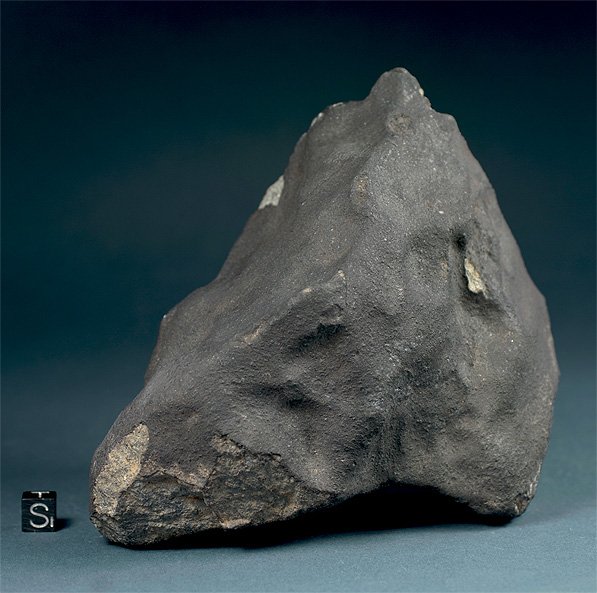Meteorites
Meteorites are rocks from space that pass through the Earth’s atmosphere and survive impact with the ground.
According to the Smithsonian National Museum of Natural History, tens of thousands of meteorites the size of a grain of rice or smaller enter Earth’s atmosphere daily. Even still, meteorites are especially rare and difficult to find.
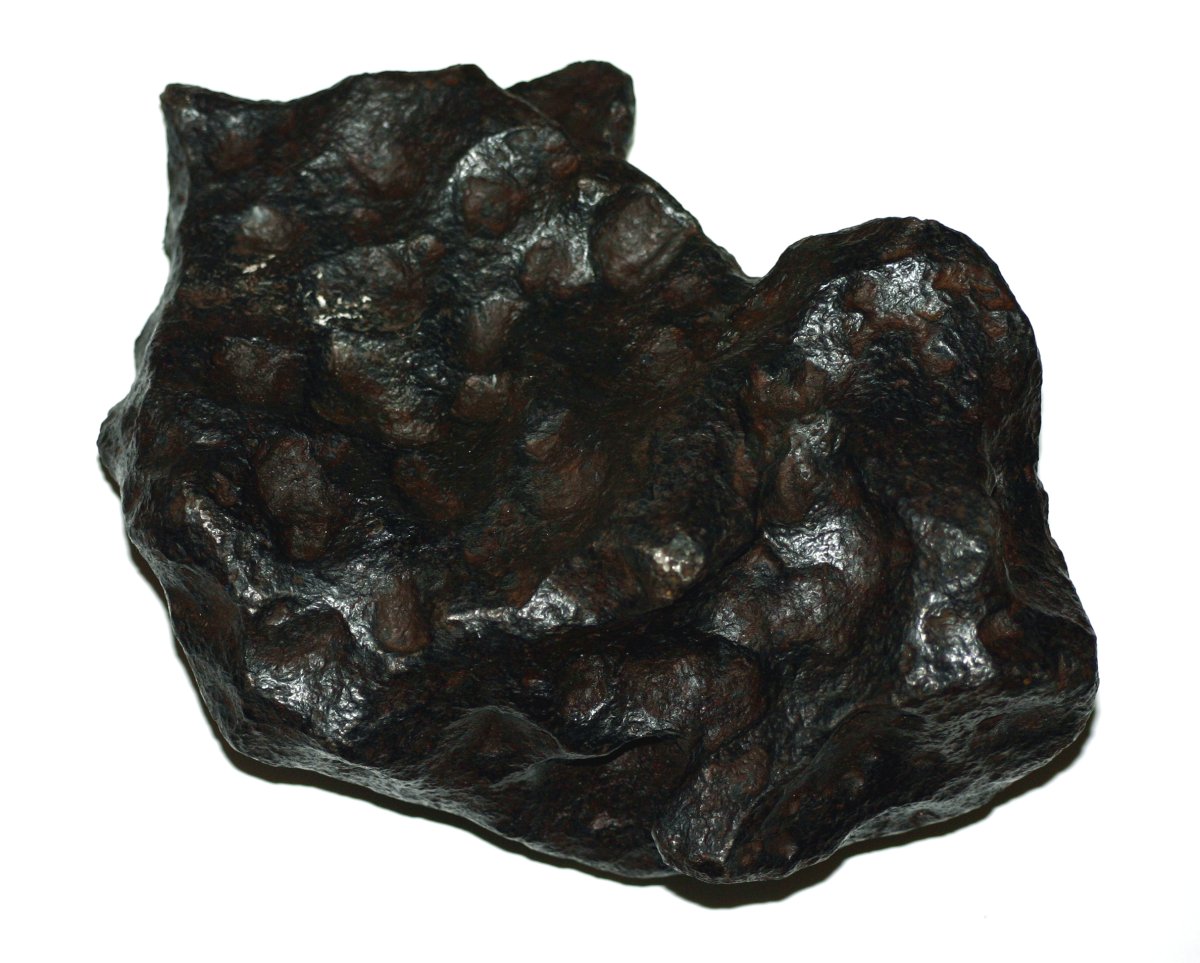
Photo courtesy of Kevin Walsh / CC BY (https://creativecommons.org/licenses/by/2.0/)
Types of meteorites
Meteorites are classified into three major families based on their composition: iron, stony, and stony-iron.
Iron
Iron meteorites (Fig. 1) are almost entirely iron-nickel metal and, because of their durable composition, represent some of the largest known meteorites recovered. Iron meteorites are strongly magnetic and also show a pattern when etched by chemicals due to the iron-nickel minerals that make up their structure (Fig. 2).

Photo courtesy of Chuck Sutherland
Stony
Stony meteorites, on the other hand, are composed almost entirely of rocky material consisting mostly of silicate minerals. They are the most common and diverse type—represented by dozens of subgroups—but are also harder to distinguish from Earth rocks. Stony meteorites are generally classified into two types based on their melt history: chondrites and achondrites.
Chondrites have never been melted and are host to some of the oldest materials in the solar system (over 4.5 billion years old). They contain small spherical structures called chondrules (Fig. 3). Their distinctive appearance is due to the droplets of silicate minerals mixed with grains of sulfides and iron-nickel metal that compose them.
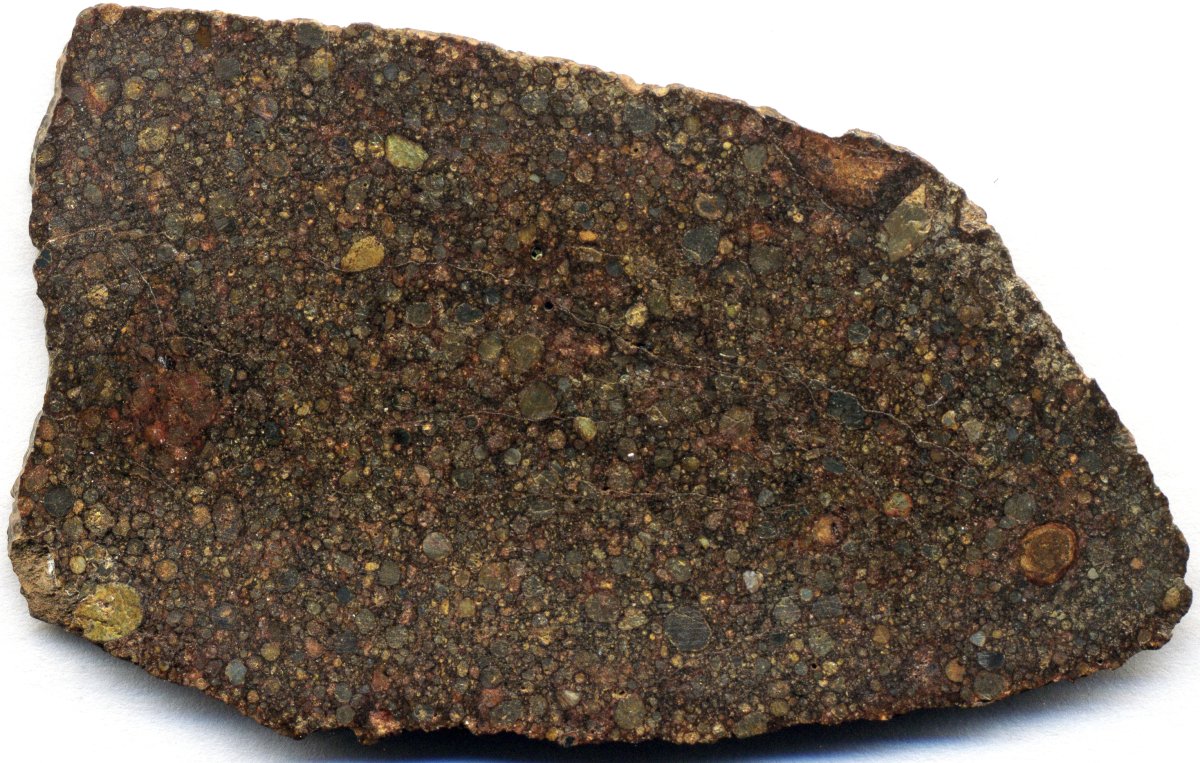
Photo courtesy of James St. John / CC BY (https://creativecommons.org/licenses/by/2.0/)
Achondrites have at some point been melted and do not contain chondrules (Figs. 4 and 5). Like the chondrites, however, they can contain iron metal. Achondrites show distinct textures due to their igneous origin, having once melted, cooled and solidified.

Photo courtesy of James St. John / CC BY (https://creativecommons.org/licenses/by/2.0/)

Photo courtesy of Alan Sailer
Stony-iron
Stony-iron meteorites, as their name suggests, consist of almost equal parts silicate minerals and iron-nickel metal. They are the rarest of the three major families and are often considered the most beautiful. Stony-iron meteorites are classified into two subgroups: pallasites and mesosiderites. Pallasites contain olivine crystals suspended in iron-nickel metal (Fig. 6). Mesosiderites are breccias, rock composed of broken fragments of rock and minerals cemented together (Fig. 7).
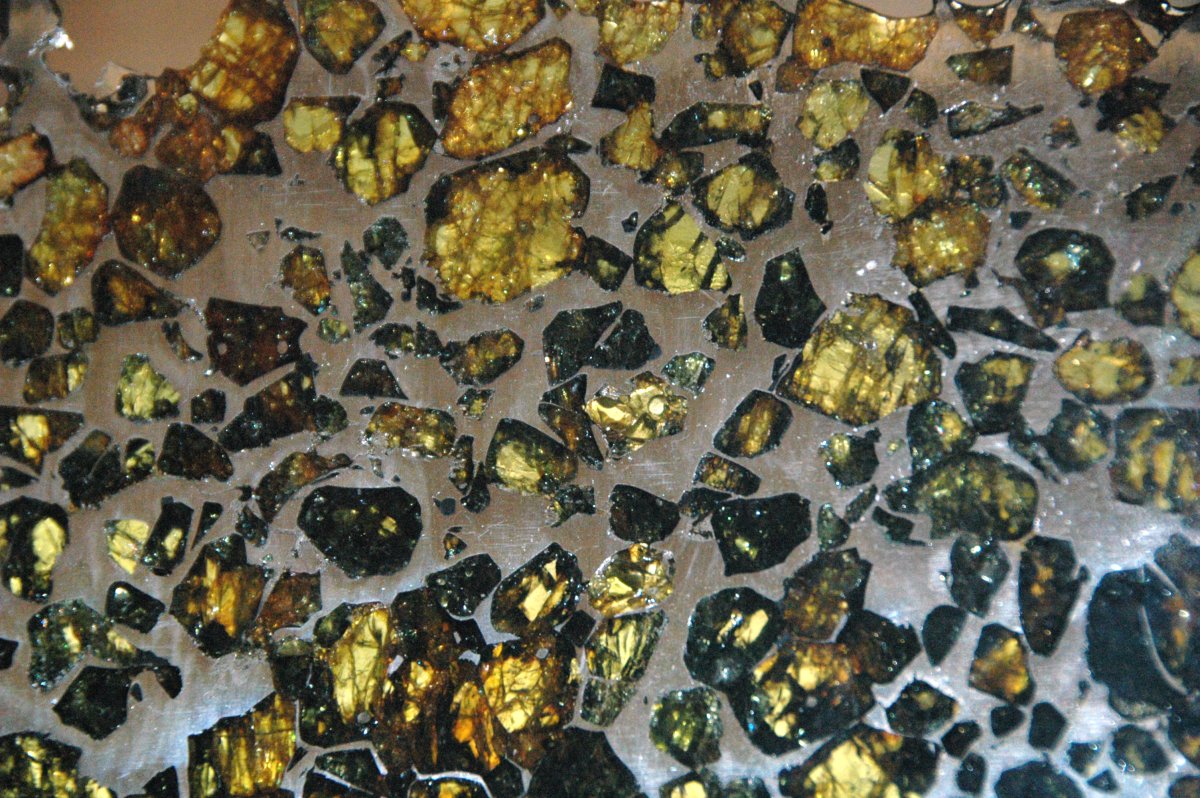
Photo courtesy of James St. John / CC BY (https://creativecommons.org/licenses/by/2.0/)
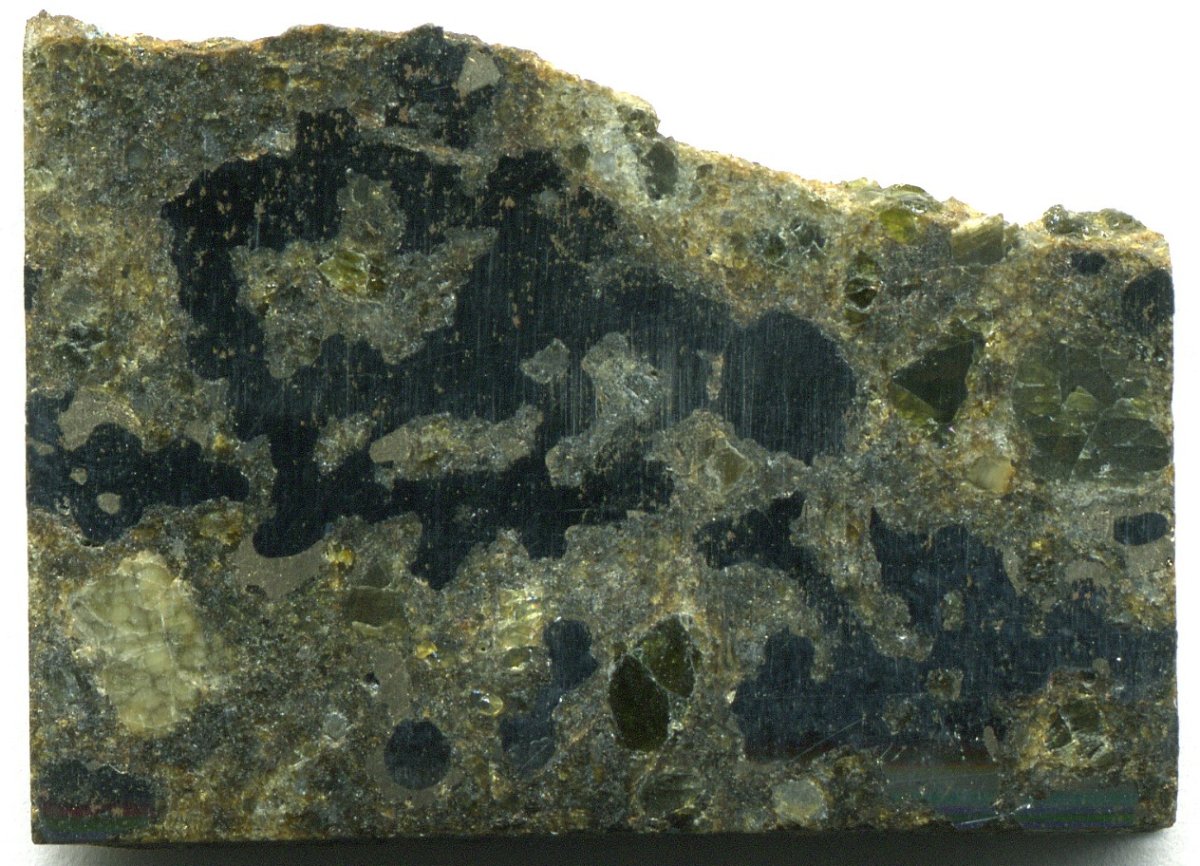
Photo courtesy of James St. John / CC BY (https://creativecommons.org/licenses/by/2.0/)
Meteorite identification
Meteorites are exceedingly rare and some can be difficult to distinguish from an Earth rock by appearance alone. Our own planet is rich in magnetic, dark black and metallic minerals and rocks that are frequently mistaken for meteorites. Cases of mistaken identity are often humorously dubbed meteor-wrongs. Nevertheless, there are a few key characteristics to look for to help determine whether or not a rock sample is indeed a meteorite. Below are just two of several excellent resources available freely online that list and describe these characteristics along with a number of other useful facts and information.
- Have you found a space rock?: An introductory guide to meteorite identification written by Geoffrey Notkin of Aerolite Meteorites
- How to Identify Meteorites by The Meteorite Exchange, Inc.
